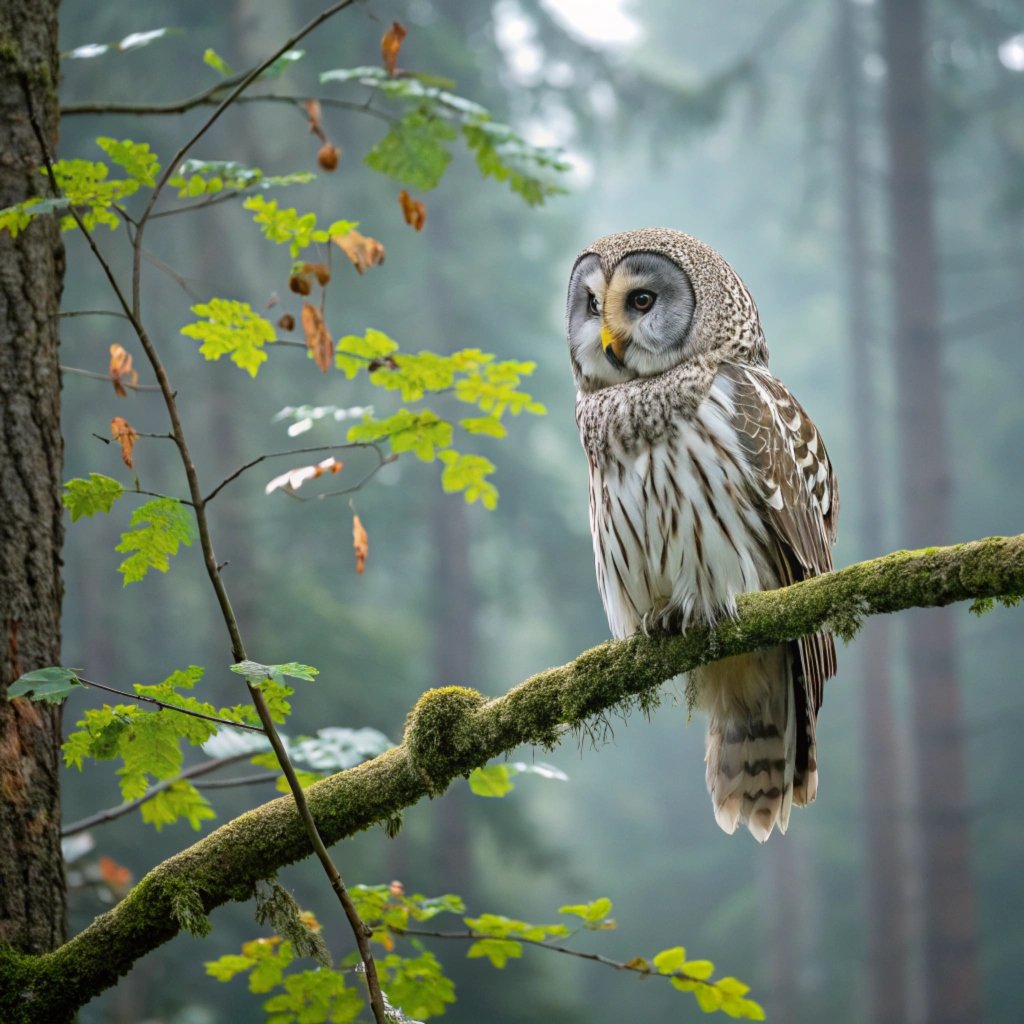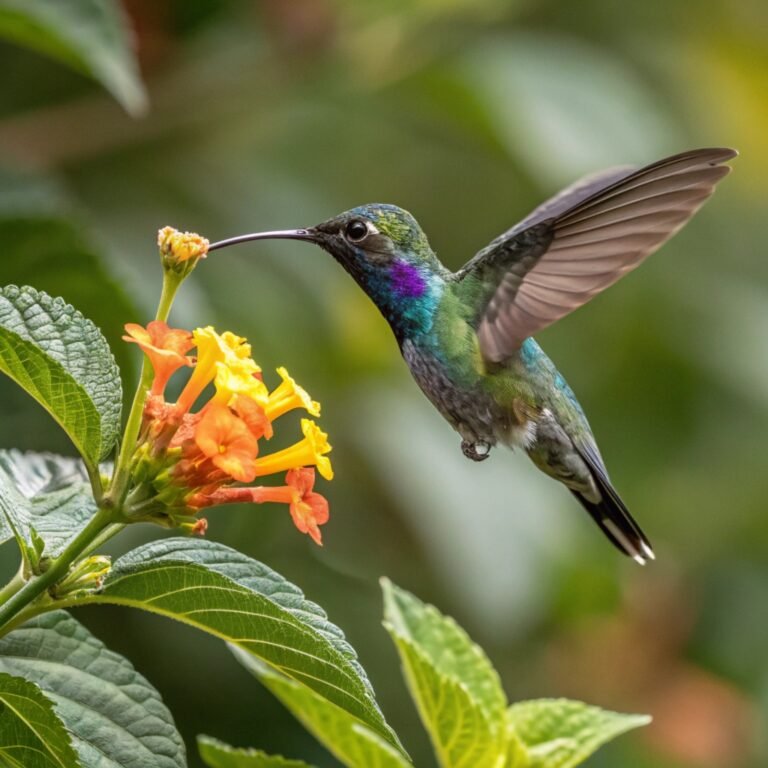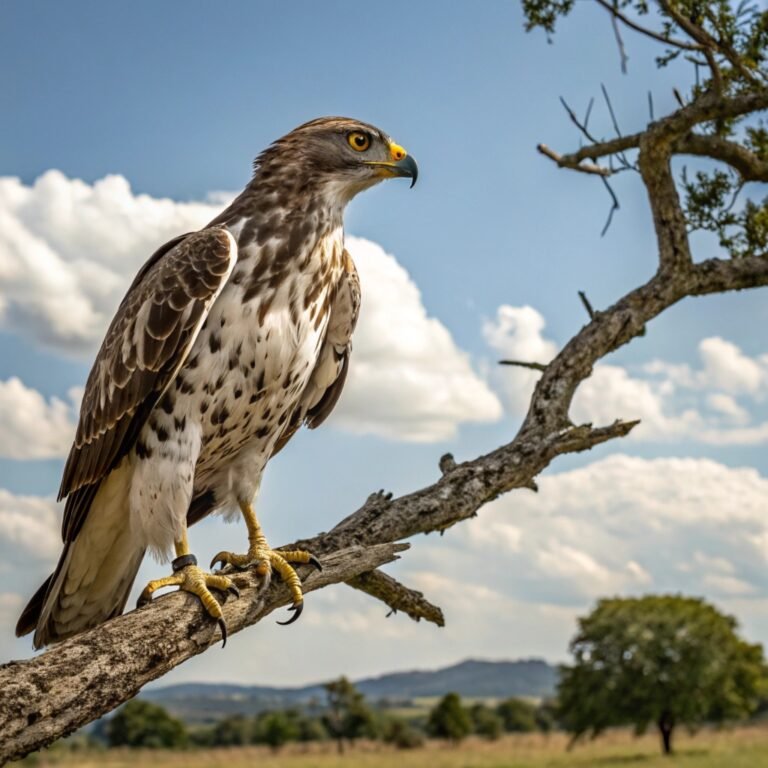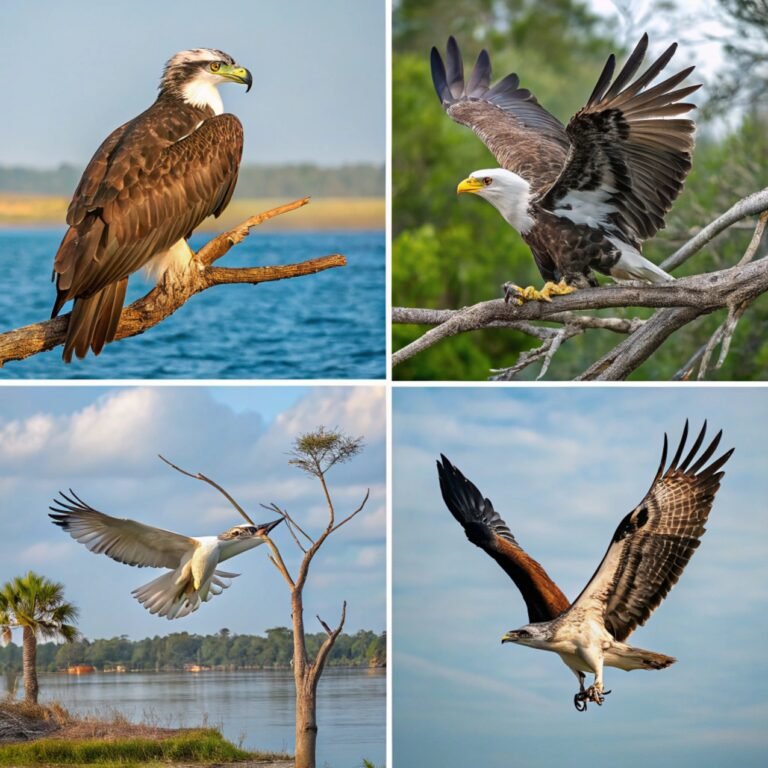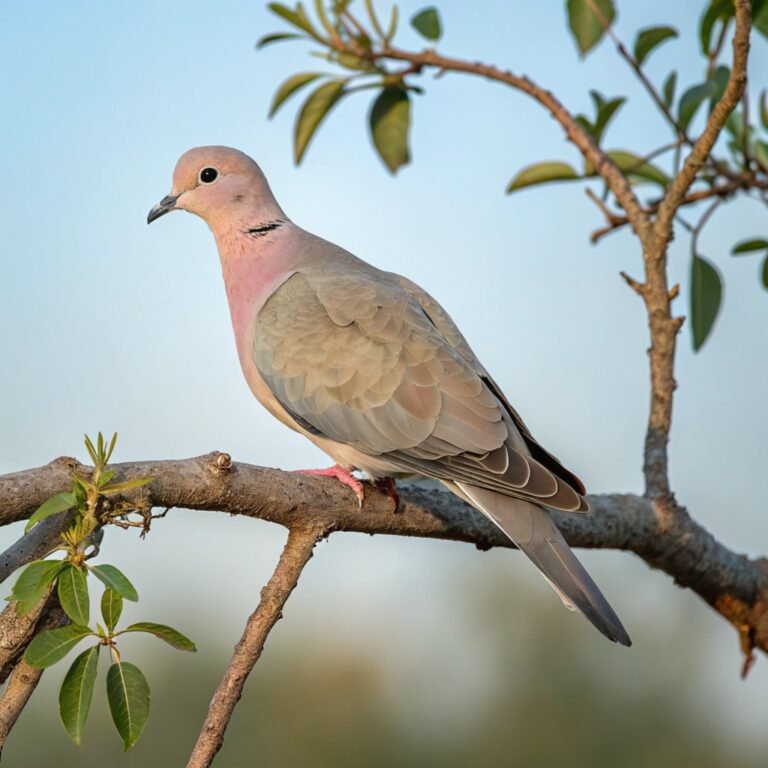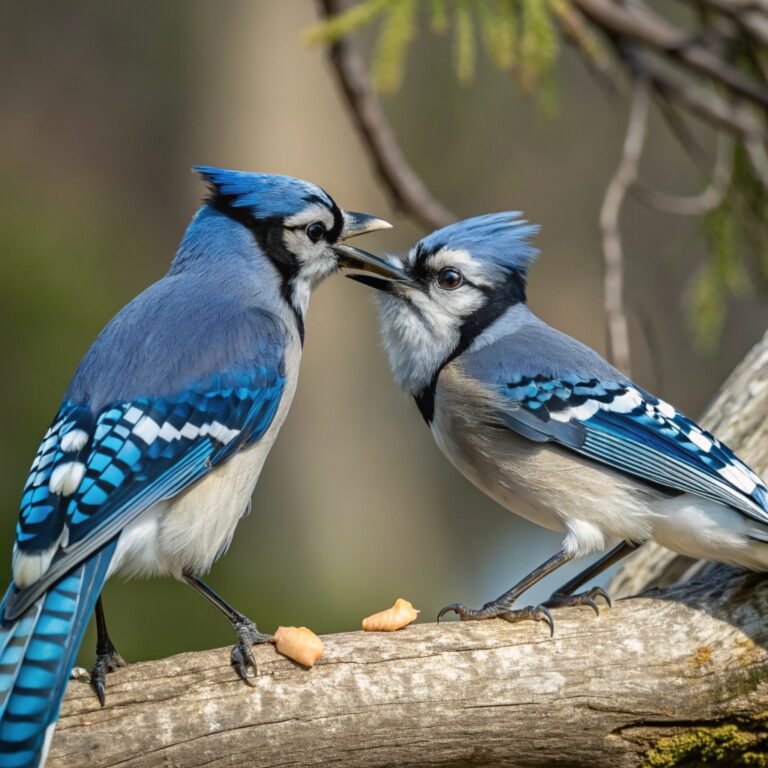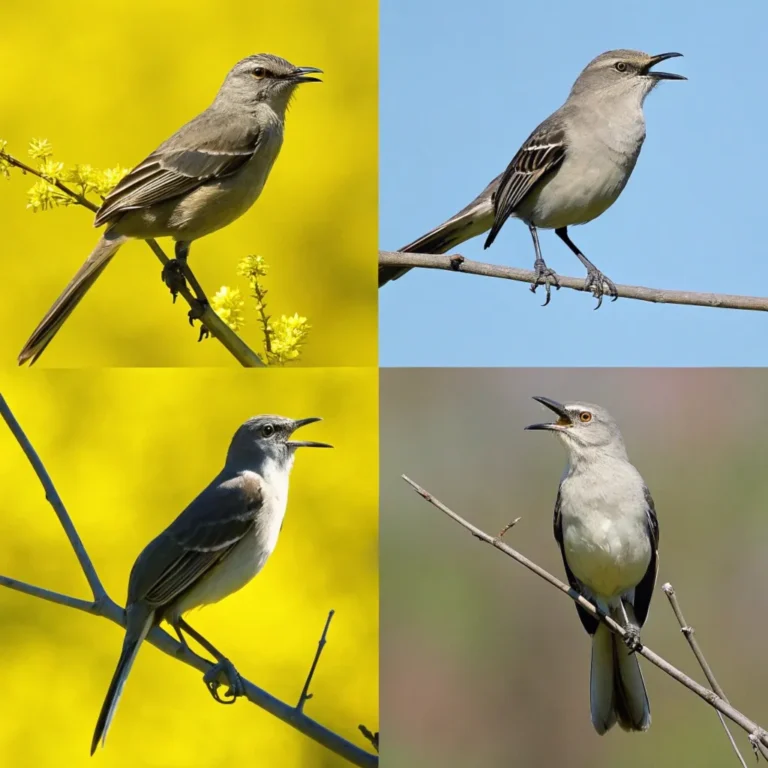Are Owls Good Luck? Amazing Symbolism, Meaning, and Cultural Significance Behind These Mysterious Birds
The enigmatic owl has long captivated human imagination, sparking a wide range of beliefs and superstitions across cultures.
These nocturnal birds, with their piercing eyes and silent flight, have been both revered and feared throughout history.
This article delves into the complex symbolism and meaning associated with owls, examining whether they are considered harbingers of good fortune or omens of misfortune.
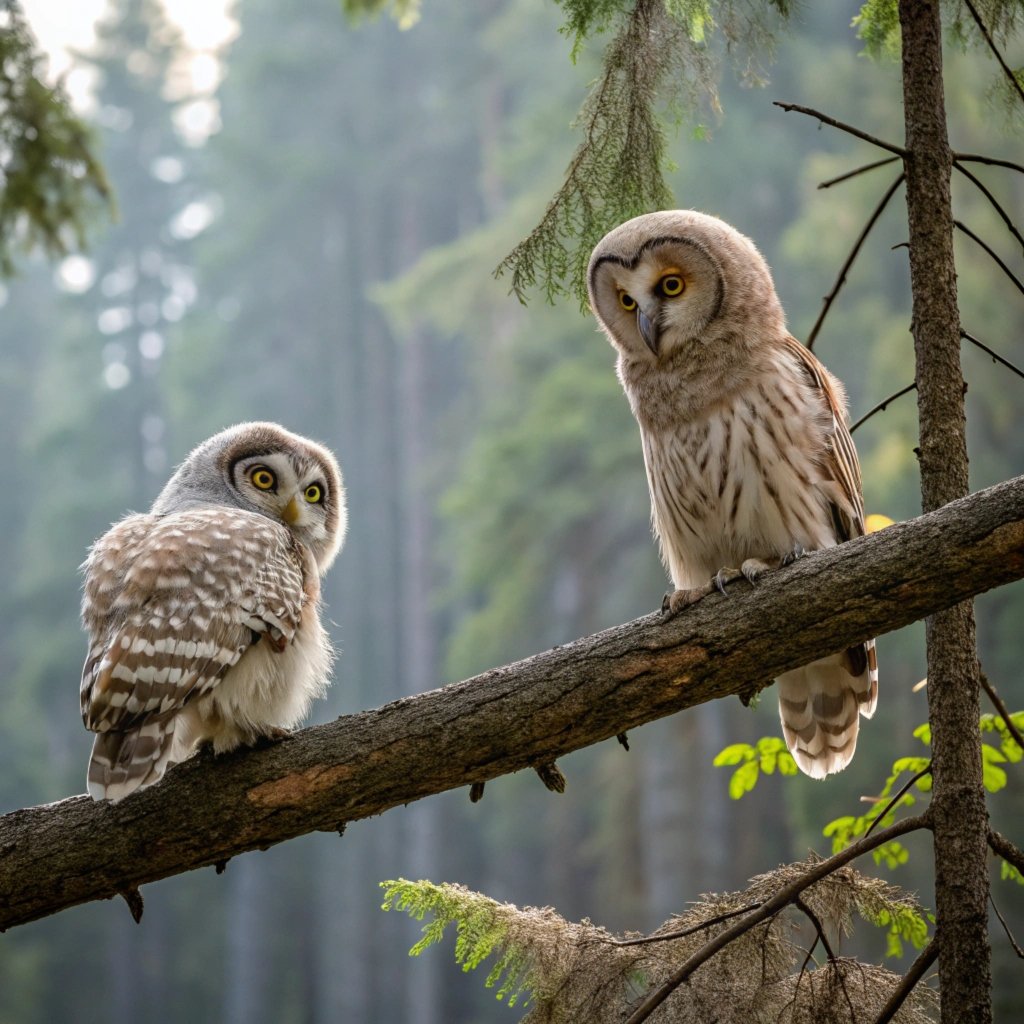
Key Takeaways:
- Wisdom and Knowledge: In many cultures, owls symbolize intelligence and wisdom.
- Cultural Variations: Owl symbolism varies greatly across different societies and traditions.
- Nocturnal Nature: The owl’s ability to see in the dark often associates it with mystery and the unknown.
- Superstitions: Many superstitions surround owls, both positive and negative.
- Protection and Guardianship: Some cultures view owls as protective spirits or guardians.
- Death and the Afterlife: Owls are frequently linked to death and the transition of souls in various mythologies.
- Modern Perceptions: Contemporary views of owls tend to be more positive, focusing on their beauty and ecological importance.
- Spiritual Significance: Many believe owl sightings carry spiritual messages or omens.
- Native American Beliefs: Diverse Native American tribes hold various beliefs about owls, ranging from respected spirits to feared omens.
- Feng Shui: In Feng Shui practices, owl symbols can be used to attract positive energy and protection.
The Owl as a Symbol of Wisdom and Knowledge
Throughout history, owls have been strongly associated with wisdom and knowledge. This connection is perhaps most famously exemplified in Greek mythology, where the owl was the favored bird of Athena, the goddess of wisdom.
The ancient Greeks valued the owl as a symbol of victory in battle and intellectual prowess.
This association has persisted into modern times, with owls often featured on graduation cards and academic emblems.
The owl’s large eyes and seemingly contemplative expression contribute to this perception of intelligence.
In Japanese culture, the word for owl, “Fukuro,” is written with characters that resemble the words for luck and protection, further reinforcing the positive associations with these birds.
This symbolism of wisdom extends beyond Western and Eastern cultures, appearing in various forms across different societies, cementing the owl’s status as a universal icon of knowledge and insight.
Cultural Variations in Owl Symbolism
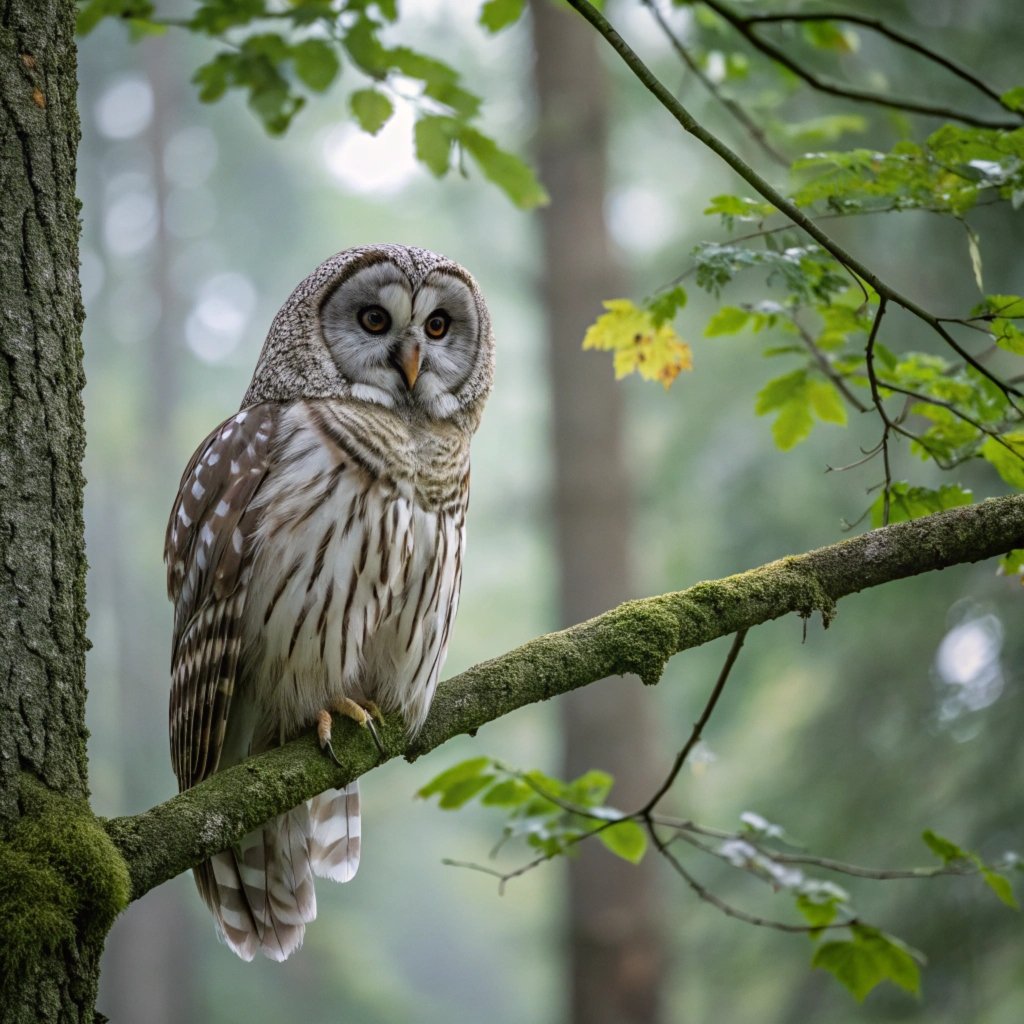
The symbolism of owls varies dramatically across different cultures, reflecting the diverse ways humans interpret and relate to these mysterious birds.
In ancient Egypt, owls were associated with death and the afterlife, often depicted in hieroglyphs guiding souls to the underworld.
Conversely, in Hindu mythology, the goddess Lakshmi, representing wealth and prosperity, is sometimes shown with an owl as her vahana or vehicle.
Native American tribes hold a wide range of beliefs about owls. For instance, the Apache and Cree viewed owl dreams as portents of death, while the Hopi saw the Burrowing Owl as a sacred protector of the underground.
In parts of the Middle East, owls are linked with destruction and ruin, believed to represent the souls of people who died unavenged.
These contrasting beliefs highlight the complex and multifaceted nature of owl symbolism, demonstrating how cultural context shapes the interpretation of these enigmatic creatures.
The Nocturnal Nature of Owls and Its Symbolic Implications
The owl’s ability to navigate and hunt in darkness has significantly influenced its symbolic meaning across cultures.
This nocturnal nature often associates owls with mystery, the unknown, and hidden knowledge.
In many traditions, the owl’s capacity to see in the dark is interpreted as an ability to perceive truths that others cannot, lending to its reputation for wisdom. However, this same trait has also led to more sinister associations.
In medieval Europe, owls became linked with witchcraft and dark magic, their nighttime activities viewed with suspicion and fear.
The silent flight of owls, an adaptation for hunting, has further contributed to their mysterious aura.
This ability to move undetected has been interpreted both positively, as a sign of stealth and cunning, and negatively, as an omen of impending doom or death.
The owl’s nocturnal lifestyle thus plays a crucial role in shaping its complex symbolism, embodying both the allure and the fear of the unseen and unknown.
Superstitions Surrounding Owls: Good Luck or Bad Omen?
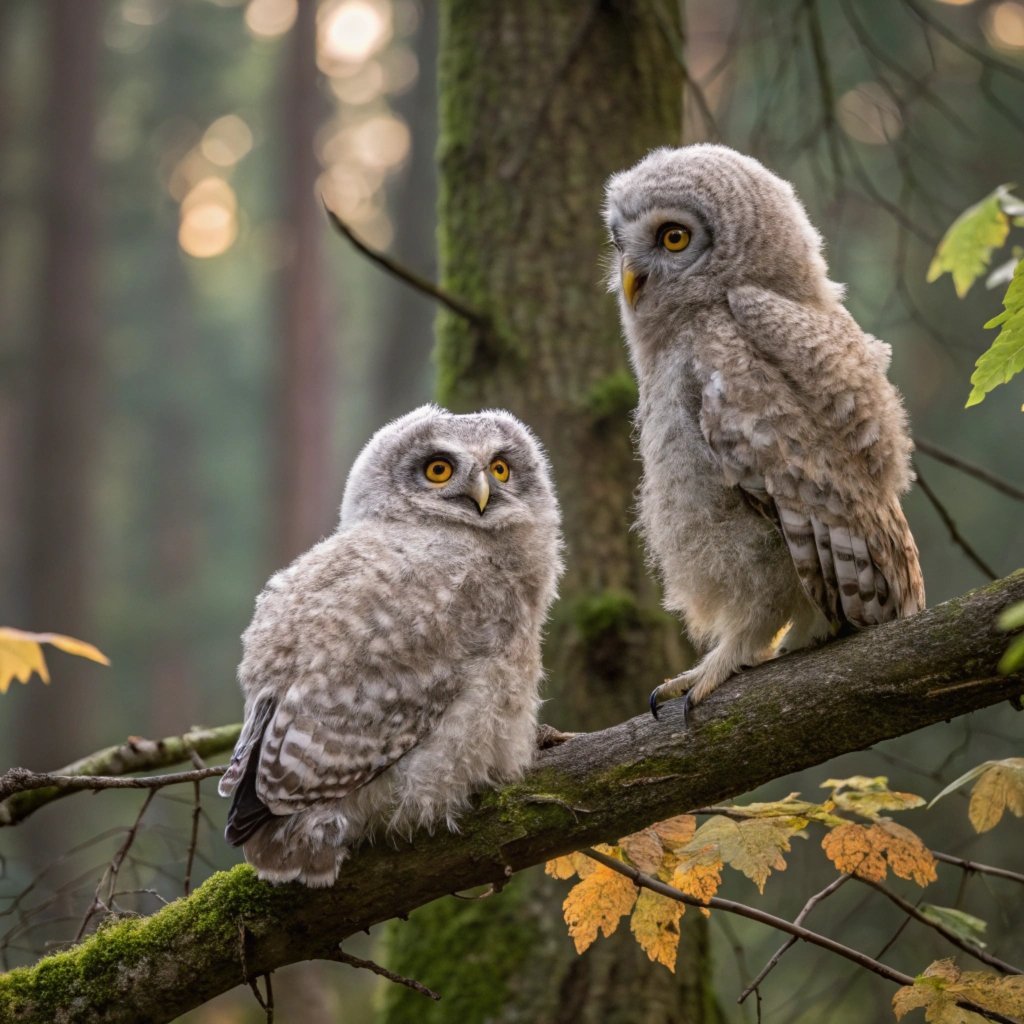
Owls have been the subject of numerous superstitions, with beliefs varying widely about whether they bring good or bad luck. In some cultures, owls are considered harbingers of misfortune.
For example, in parts of India, hearing an owl hoot is believed to foretell death or disaster. Similarly, some Native American tribes viewed owl calls as warnings of impending doom.
However, not all superstitions cast owls in a negative light. In some European folklore, owls were thought to protect against evil and lightning.
The custom of nailing an owl to a barn door to ward off evil persisted into the 19th century in some regions. In Japanese culture, owl figurines are popular as good luck charms.
The diverse nature of these superstitions reflects the owl’s ambiguous status in human imagination.
Some beliefs focus on the owl’s association with night and death, while others emphasize its perceived wisdom and protective qualities.
These contrasting superstitions demonstrate the complex relationship between humans and these enigmatic birds, showing how cultural context shapes our interpretation of natural phenomena.
Owls as Protectors and Guardians in Various Traditions
In several cultures, owls are revered as protective spirits or guardians. This belief is particularly prevalent in some Native American traditions.
For instance, the Dakota Hidatsa Indians saw the Burrowing Owl as a protective spirit for brave warriors.
In Hopi culture, the Burrowing Owl, known as Ko’ko, is considered the guardian of the underground, including the realm of seed germination.
This protective role extends to other cultures as well. In ancient Babylon, owl amulets were used to protect women during childbirth.
The Chinese tradition associates owls with protection against lightning, with owl effigies placed in the corners of homes for this purpose.
In some African cultures, owls are believed to have the power to ward off evil spirits. These protective associations often stem from the owl’s perceived wisdom and its ability to see in the dark, qualities that make it an ideal guardian against unseen threats.
The concept of owls as protectors highlights a more positive interpretation of these birds, contrasting with the fear and superstition they sometimes inspire.
Owls and Their Association with Death and the Afterlife
The connection between owls and death is a recurring theme in many cultures, often stemming from their nocturnal nature and haunting calls.
In ancient Egyptian mythology, owls were associated with the afterlife, guiding souls to the underworld.
This theme is echoed in various Native American beliefs, where owls were sometimes seen as psychopomps – creatures that escort deceased souls to the afterlife.
In some traditions, such as those of the Kwakiutl people, owls were believed to embody the souls of the recently departed.
The association with death is not always negative; in some cultures, it represents a necessary transition or transformation.
For instance, in ancient Greek mythology, while owls were connected to Athena and wisdom, they were also associated with Atropos, one of the three Fates who cut the thread of life.
This dual symbolism reflects the complex nature of death in human understanding – both an end and a transition.
The owl’s role in death-related beliefs underscores its status as a creature bridging the visible and invisible worlds, embodying the mysteries of life, death, and the beyond.
Modern Perceptions of Owls: From Fear to Fascination
In contemporary society, perceptions of owls have largely shifted from fear and superstition to fascination and admiration. This change reflects broader shifts in cultural attitudes towards nature and wildlife.
Today, owls are often celebrated for their beauty and ecological importance. Conservation efforts have raised awareness about the vital role owls play in ecosystems as predators controlling rodent populations.
Popular culture has also contributed to this changing perception, with owls frequently portrayed positively in literature, films, and art.
The Harry Potter series, for instance, depicted owls as intelligent and loyal companions, further endearing them to the public.
In education and academia, the traditional symbolism of owls as representations of wisdom persists, with owl imagery commonly used in logos and emblems of educational institutions.
However, some traditional beliefs and superstitions about owls continue to exist alongside these modern views, particularly in rural areas and among indigenous populations.
This coexistence of old and new perceptions highlights the evolving relationship between humans and these enigmatic birds, reflecting broader changes in our understanding of and relationship with the natural world.
The Spiritual Significance of Owl Sightings
Many people attribute spiritual significance to owl sightings, interpreting them as messages or omens from the universe.
In various spiritual traditions, owls are seen as messengers of the divine or as creatures with access to higher wisdom. Some believe that seeing an owl, especially in unexpected circumstances, is a sign to pay attention to one’s intuition or inner wisdom.
Others interpret owl sightings as a call to look beyond surface appearances and seek deeper truths.
In some New Age philosophies, owls are associated with clairvoyance and psychic abilities, their nocturnal vision symbolizing the ability to see what others cannot.
The timing and circumstances of an owl sighting are often considered significant. For instance, seeing an owl during the day might be interpreted differently from a nighttime encounter.
Some spiritual practitioners believe that the species of owl and its behavior during the sighting can offer specific guidance or warnings.
While these interpretations vary widely and lack scientific basis, they reflect the enduring human tendency to seek meaning in natural phenomena, particularly in encounters with creatures as mysterious and captivating as owls.
Native American Perspectives on Owls: A Diverse Range of Beliefs
Native American cultures exhibit a wide range of beliefs about owls, reflecting the diversity of tribes across the Americas. These perspectives often blend respect, fear, and spiritual significance.
In many tribes, owls are seen as powerful spiritual beings with the ability to communicate messages from the spirit world.
For example, the Hopi people revere the Burrowing Owl as Ko’ko, the guardian of the underground and tender of all subterranean things.
Conversely, some tribes associate owls with more ominous meanings. The Apache, for instance, believe that dreaming of an owl is a portent of approaching death.
The Cree people interpret certain owl calls as summons from spirits, with potentially fatal consequences if unanswered.
Other tribes, like the Lenape, view owls more positively, believing that dreaming of an owl could result in the bird becoming a personal guardian.
These varied beliefs demonstrate the complex relationship between Native American cultures and owls, encompassing themes of wisdom, protection, death, and spiritual communication.
This diversity of perspectives underscores the importance of understanding cultural context when interpreting the symbolism of owls in different Native American traditions.
Owls in Feng Shui: Harnessing Positive Energy
In the practice of Feng Shui, owls are often used as symbols to attract positive energy and protection.
Feng Shui practitioners believe that owl figurines or images can be strategically placed in homes or offices to enhance certain aspects of life.
The owl’s association with wisdom and protection makes it a popular choice for areas related to career, knowledge, and personal growth.
In Feng Shui, owl symbols are thought to ward off negative energy and attract good fortune.
Placing owl figurines facing away from the main entrance of a home is believed to protect against misfortune and negative influences.
Some Feng Shui experts recommend using pairs of owl figures to enhance relationship strength and harmony.
The placement of owl symbols in specific areas of a space, according to the Bagua map, is thought to influence different life aspects.
For instance, an owl in the knowledge area might boost learning and insight, while one in the career area could bring professional success.
While these beliefs are not scientifically proven, they reflect the enduring positive associations with owls in some cultural traditions and the human desire to find meaning and influence in our surroundings.
The Role of Owls in Literature and Popular Culture
Owls have played significant roles in literature and popular culture, often embodying wisdom, mystery, and magic.
In children’s literature, owls frequently appear as wise and helpful characters, such as the owl in A.A. Milne’s Winnie the Pooh stories.
The Harry Potter series by J.K. Rowling prominently features owls as magical messengers and companions, further popularizing these birds among younger generations.
In more mature literature, owls often symbolize deeper themes. For example, in Shakespeare’s works, owl calls are sometimes used to create an atmosphere of foreboding or to foreshadow tragic events.
Contemporary authors continue to use owls as powerful symbols, drawing on their rich mythological and cultural associations.
In popular culture, owls appear in various forms, from cartoon characters to corporate logos, often representing intelligence or education.
The image of the owl has been adopted by numerous educational institutions and libraries, reinforcing its association with learning and knowledge.
This widespread use of owl imagery in literature and media has contributed to shaping modern perceptions of these birds, often emphasizing their positive attributes while still acknowledging their mysterious nature.
Scientific Understanding of Owls: Dispelling Myths and Superstitions
Scientific research has provided valuable insights into owl behavior and ecology, helping to dispel many myths and superstitions surrounding these birds.
Studies have revealed the remarkable adaptations of owls for nocturnal hunting, including their exceptional hearing and silent flight.
Research has shown that owls play crucial roles in ecosystems as predators, helping to control rodent populations.
The belief that owls are omens of death or bad luck has no scientific basis; instead, owl activity is driven by natural behaviors related to hunting and territorial defense.
Scientists have also studied owl vocalizations, explaining the various calls that have been interpreted superstitiously in many cultures.
Conservation biology has highlighted the challenges facing many owl species due to habitat loss and human activities, emphasizing the need for protection rather than fear or superstition.
Understanding owl biology has led to better appreciation of their ecological importance and the development of conservation strategies.
While scientific knowledge has demystified many aspects of owl behavior, it has also revealed new wonders about these birds, such as their remarkable cognitive abilities and complex social behaviors in some species.
This scientific perspective encourages a more informed and appreciative view of owls, balancing cultural beliefs with factual understanding.
Owls in Art and Symbolism Throughout History
Owls have been a recurring motif in art and symbolism throughout human history, appearing in various forms across different cultures and time periods.
In ancient Egyptian art, owls were often depicted in hieroglyphs, associated with death and the afterlife.
Greek and Roman art frequently featured owls in connection with Athena or Minerva, goddesses of wisdom. Medieval European art often portrayed owls in a more sinister light, associating them with witchcraft and evil.
In contrast, some Native American art traditions depict owls as powerful spiritual beings or clan symbols. Asian art, particularly in Japan and China, has long incorporated owl imagery, often as symbols of good fortune or protection.
In modern and contemporary art, owls continue to be popular subjects, with artists exploring both traditional symbolism and new interpretations.
The use of owl imagery in corporate logos and branding, especially for educational institutions, reflects the enduring association of owls with wisdom and knowledge.
This rich artistic history demonstrates the enduring fascination humans have had with owls, reflecting changing cultural attitudes and beliefs over time.
The diverse representations of owls in art provide a visual chronicle of human perceptions of these enigmatic birds, from objects of fear and superstition to symbols of wisdom and beauty.
FAQs
Are owls really a sign of bad luck?
The belief that owls bring bad luck is a superstition that varies across cultures. While some traditions associate owls with misfortune or death, many others view them positively as symbols of wisdom and protection. Scientifically, there’s no evidence that owls influence luck or foretell events.
Why are owls associated with wisdom?
Owls are often associated with wisdom due to their large eyes, which give them an appearance of thoughtfulness, and their ability to see in the dark, metaphorically representing insight. This association was particularly strong in ancient Greek culture, where owls were linked to Athena, the goddess of wisdom.
Do owl sightings have special meaning?
The interpretation of owl sightings varies depending on cultural and personal beliefs. Some view owl sightings as spiritual messages or omens, while others simply appreciate them as encounters with beautiful wildlife. There’s no scientific evidence that owl sightings carry inherent meaning beyond natural animal behavior.
How are owls viewed in Native American cultures?
Native American views on owls are diverse. Some tribes see owls as protective spirits or bearers of wisdom, while others associate them with death or bad omens. These beliefs vary significantly among different tribes and regions.
Can owls be used in Feng Shui?
Yes, owl symbols are sometimes used in Feng Shui practices. They are often placed to attract wisdom, protection, and positive energy. However, the use and placement of owl symbols in Feng Shui should be done thoughtfully, considering the specific principles of this practice.

Hello, I’m Emily Price, the founder of Birds Affection. As a passionate bird enthusiast and spiritual seeker, I’ve always been fascinated by the symbolic meanings and mystical connections between birds and our lives. On this website, I share my knowledge and insights on the spiritual significance of various bird species, exploring their roles as messengers, guides, and teachers. Through my writing, I aim to inspire and educate others on the profound wisdom and beauty that birds bring to our world. Join me on this journey as we delve into the enchanting realm of bird symbolism and discover the hidden meanings behind these magnificent creatures.

